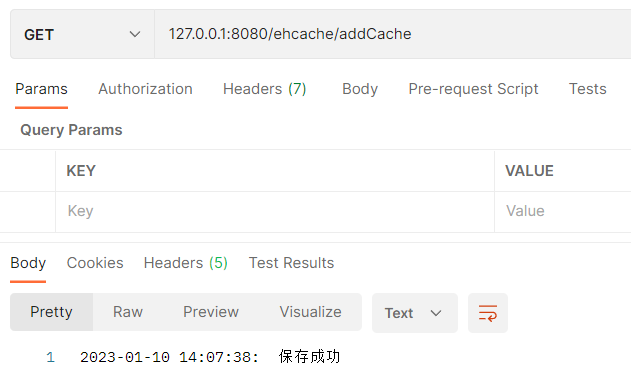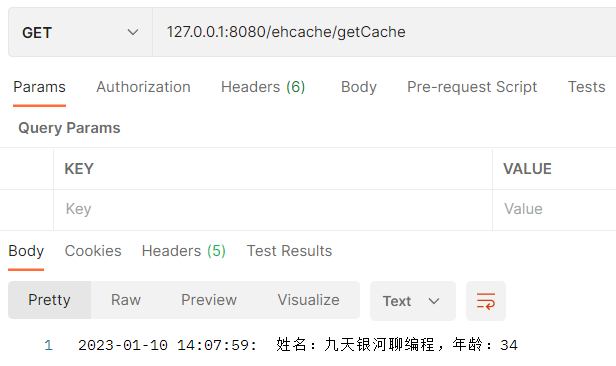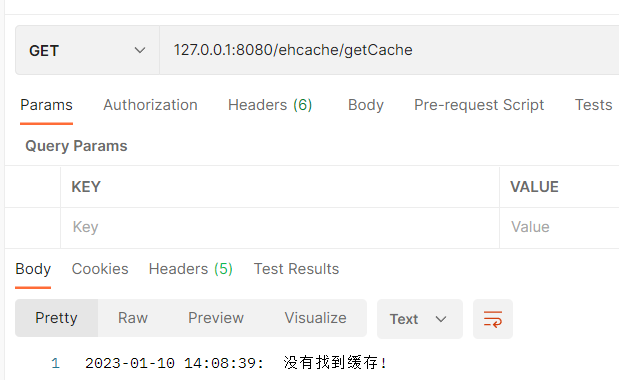Spring 缓存注解是基于Spring AOP切面,必须走代理才能生效。同类调用或者子类调用父类带有缓存注解的方法时属于内部调用,没有走代理,所以注解不会生效。所以在使用@Cacheable时,一定要放在在service的实现类中进行调用。

前言
在平时做项目都要用到缓存,方便临时存储一些数据,加快访问速度。如果项目比较小,搭建redis服务,后期在维护上比较麻烦。今天分享一个SpringBoot集成Ehcache实现缓存的教程,适合中小项目中使用。
准备工作
1、maven中导入依赖
<!--开启Springboot cache 缓存 -->
<dependency>
<groupId>org.springframework.boot</groupId>
<artifactId>spring-boot-starter-cache</artifactId>
</dependency>
<!-- ehcache 缓存 -->
<dependency>
<groupId>org.ehcache</groupId>
<artifactId>ehcache</artifactId>
<version>3.8.1</version>
</dependency>
<dependency>
<groupId>javax.cache</groupId>
<artifactId>cache-api</artifactId>
<version>1.1.1</version>
</dependency>
2、启动类上增加缓存注解
@MapperScan("com.zhangls.ehcache.dao.**")
@SpringBootApplication
@EnableCaching
public class EhcacheApplication {
public static void main(String[] args) {
SpringApplication.run(EhcacheApplication.class, args);
}
}3、配置Ehcache
在resources下增加ehcache.xml文件,配置如下:
<config xmlns:xsi="http://www.w3.org/2001/XMLSchema-instance"
xmlns="http://www.ehcache.org/v3"
xmlns:jsr107="http://www.ehcache.org/v3/jsr107"
xsi:schemaLocation="
http://www.ehcache.org/v3 http://www.ehcache.org/schema/ehcache-core-3.0.xsd
http://www.ehcache.org/v3/jsr107 http://www.ehcache.org/schema/ehcache-107-ext-3.0.xsd">
<service>
<!--开启service注解-->
<jsr107:defaults enable-statistics="true"/>
</service>
<!-- user 为该缓存名称 对应@Cacheable的属性cacheNames-->
<cache alias="UserCache">
<!-- 指定缓存 key 类型,对应@Cacheable的属性key -->
<key-type>java.lang.String</key-type>
<!-- 配置value类型 -->
<value-type>com.zhangls.ehcache.entity.User</value-type>
<expiry>
<!-- 缓存 ttl,单位为分钟,现在设置的是1分钟 -->
<ttl unit="minutes">1</ttl>
</expiry>
<resources>
<!-- 分配资源大小 -->
<heap unit="entries">2000</heap>
<offheap unit="MB">100</offheap>
</resources>
</cache>
<!--这里可以配置N个 。。。。 不同的cache 根据业务情况配置-->
</config>
4、application.yml中配置
spring:
cache:
jcache:
config: classpath:ehcache.xml
注意事项
1.Ehcache 会在一定的规则下会序列化后存储到硬盘上,因此缓存对象必须支持序列化。
public class User implements Serializable{}2.Spring定义了缓存接口Cache和管理缓存控制器 CacheManager,路径为:
import org.springframework.cache.Cache;
import org.springframework.cache.CacheManager;
使用方法--手动管理方式
@Autowired
private CacheManager cacheManager;
@GetMapping("/addCache")
public String addCache() {
User user = new User();
user.setUsername("九天银河聊编程");
user.setAge(34);
Cache cache = cacheManager.getCache("UserCache");
cache.put("user", user);
SimpleDateFormat sdf = new SimpleDateFormat("yyyy-MM-dd HH:mm:ss");
Date now = new Date();
return sdf.format(now) + ": " + "保存成功";
}
@GetMapping("/getCache")
public String getCache() {
Cache cache = cacheManager.getCache("UserCache");
Cache.ValueWrapper res = cache.get("user");
SimpleDateFormat sdf = new SimpleDateFormat("yyyy-MM-dd HH:mm:ss");
Date now = new Date();
if (null != res) {
User user = (User) res.get();//这里获取 ehcache.xml 中 <cache> value-type 定义的类型,可以直接强转。
return sdf.format(now) + ": " + "姓名:" + user.getUsername() + ",年龄:" + user.getAge();
}
return sdf.format(now) + ": " + "没有找到缓存!";
}
运行结果
执行:127.0.0.1:8080/ehcache/addCache。

执行:127.0.0.1:8080/ehcache/getCache。

1分钟后执行:127.0.0.1:8080/ehcache/getCache,缓存失效。

使用方法--@Cacheable 注解方式
service代码:
@Service
public class ImPersonServiceImpl implements ImPersonService{
@Resource
private PersonMapper personMapper;
@Override
@Cacheable(cacheNames = "PersonCache", key = "#personId")
public ImPerson selectByPrimaryKey(String personId){
SimpleDateFormat sdf = new SimpleDateFormat("yyyy-MM-dd HH:mm:ss");
Date now = new Date();
System.out.println(sdf.format(now) + ": 未命中缓存,请求数据库");
return personMapper.selectByPrimaryKey(personId);
}
}
controller代码:
@GetMapping("/getCachePerson")
public ImPerson getCachePerson() {
SimpleDateFormat sdf = new SimpleDateFormat("yyyy-MM-dd HH:mm:ss");
Date start = new Date();
System.out.println(sdf.format(start) + ":执行开始------");
ImPerson person = imPersonService.selectByPrimaryKey("1");
Date end = new Date();
System.out.println(sdf.format(end) + ":执行结束------");
return person;
}执行两次:127.0.0.1:8080/ehcache/getCachePerson。

控制台只打印一次SQL信息,说明第二次请求从缓存中获取。
@Cacheable属性说明
- cacheNames/value :用来指定缓存组件的名字。
- key :缓存数据时使用的 key,可以用它来指定。默认是使用方法参数的值。(这个 key 你可以使用 spEL 表达式来编写)。
- keyGenerator :key 的生成器。 key 和 keyGenerator 二选一使用。
- cacheManager :可以用来指定缓存管理器。从哪个缓存管理器里面获取缓存。
- condition :可以用来指定符合条件的情况下才缓存,如下表示id>1的进行缓存。
@Cacheable(cacheNames = "PersonCache", condition = "#id > 1")
- unless :否定缓存。当 unless 指定的条件为 true ,方法的返回值就不会被缓存。当然你也可以获取到结果进行判断。(通过 #result 获取方法结果)
- sync :是否使用异步模式。
踩坑说明
Spring 缓存注解是基于Spring AOP切面,必须走代理才能生效。同类调用或者子类调用父类带有缓存注解的方法时属于内部调用,没有走代理,所以注解不会生效。所以在使用@Cacheable时,一定要放在在service的实现类中进行调用。




































